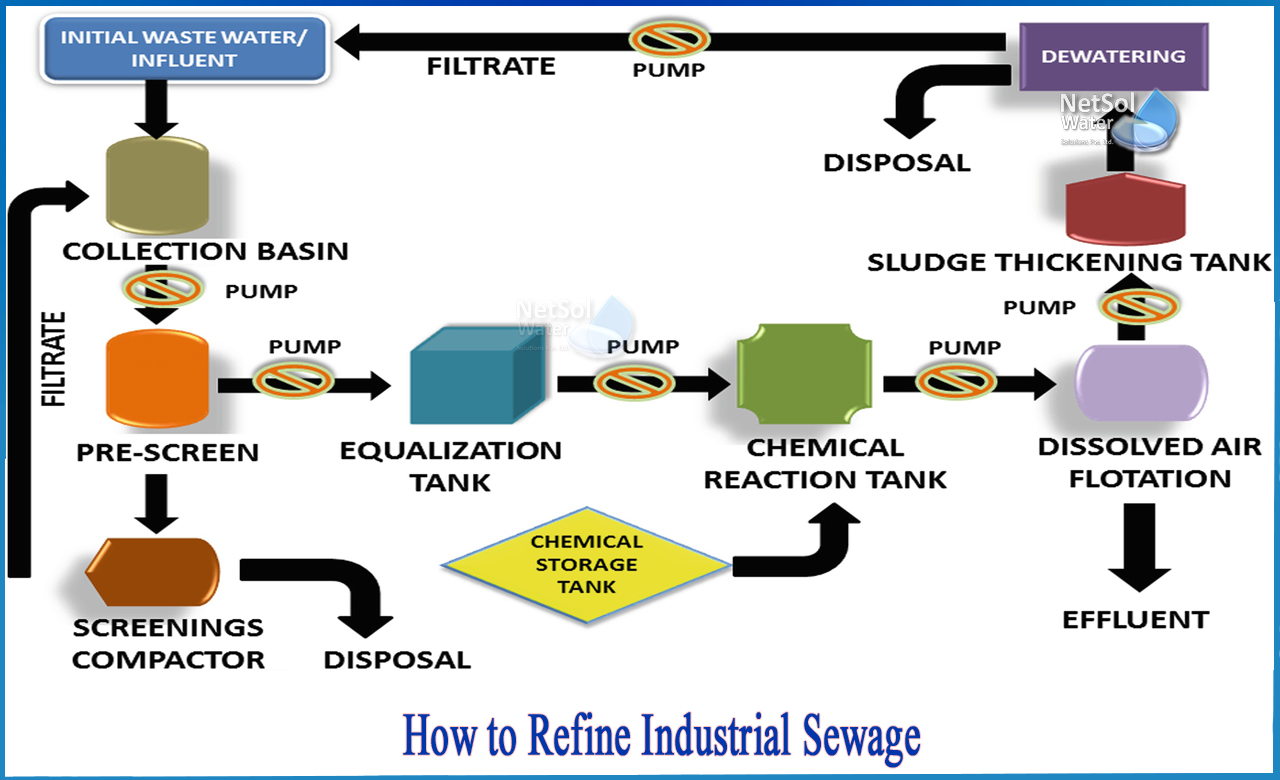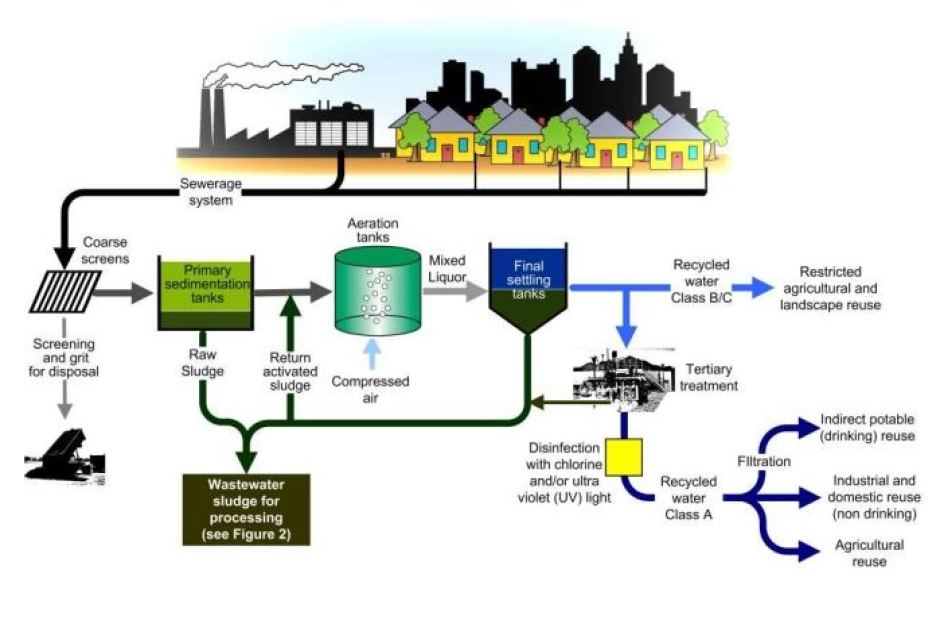Industrial Waste Water Treatment-- Tailored Solutions for Effective Wastewater Treatment
Industrial Waste Water Treatment-- Tailored Solutions for Effective Wastewater Treatment
Blog Article
Trick Methods in Hazardous Waste Water Therapy Processes
The therapy of commercial wastewater is an essential element of ecological administration, including a range of methods designed to alleviate the influence of contaminants. From the basic physical approaches that divide solids to the innovative chemical and biological processes that target specific contaminants, each technique plays a vital function in achieving water top quality requirements. Improvements in modern technologies such as membrane layer filtration and progressed oxidation processes use innovative remedies for enhancing therapy efficiency. Understanding just how these approaches adjoin and their effects for sustainability raises vital questions concerning the future of wastewater management in industry.
Physical Therapy Methods
How efficiently can physical treatment methods deal with the complexities of industrial wastewater? Physical therapy methods play a crucial duty in the preliminary phases of wastewater management, focusing primarily on the removal of solids and large particulates. Methods such as flotation, purification, and sedimentation are necessary for reducing the concentration of put on hold solids, therefore enhancing the effectiveness of succeeding treatment processes.
Sedimentation includes the gravitational settling of solids, enabling the splitting up of larger materials from the wastewater. This technique is specifically reliable in making clear water before biological or chemical treatments. Filtering, on the other hand, utilizes different media to capture particle issue, ensuring that smaller contaminants are removed. This technique can be customized to accommodate various kinds of industrial effluents, creating clearer effluent streams.
Furthermore, flotation approaches, which make use of air bubbles to raise suspended solids to the surface for removal, are effective in dealing with wastewater with high focus of fats, oils, and oils. Overall, physical treatment methods act as a vital very first step in the extensive administration of commercial wastewater, making sure that the load on subsequent therapy phases is reduced and improving overall treatment efficiency.
Chemical Treatment Strategies
While physical therapy methods lay the foundation for efficient wastewater management, chemical treatment methods are important for dealing with the much more complex impurities frequently located in industrial effluents. These methods utilize various chemical representatives to precipitate, neutralize, or oxidize dangerous substances, guaranteeing a much more comprehensive elimination of toxins.
One usual method is coagulation and flocculation, where chemical coagulants such as light weight aluminum sulfate or ferric chloride are included in promote the gathering of suspended particles. This procedure boosts solid-liquid splitting up, minimizing turbidity and improving water high quality. In addition, neutralization processes are utilized to adjust the pH of wastewater, utilizing bases or acids to reduce the effects of acidic or alkaline streams, specifically.
Oxidation-reduction reactions play a critical duty in derogatory natural contaminants and microorganisms. Chemical oxidants like chlorine, hydrogen, or ozone peroxide are made use of to damage down complicated organic compounds, making them much less harmful or extra eco-friendly. In addition, advanced oxidation processes (AOPs) incorporate several oxidation strategies to improve toxin elimination performance.
Biological Treatment Processes
The efficiency of wastewater treatment is substantially improved by organic treatment processes, which harness the natural metabolic activities of microorganisms to decompose raw material and remove toxins. Industrial Waste Water Treatment. These procedures mostly include cardiovascular and anaerobic digestion, each tailored for details kinds of wastewater
Cardiovascular treatment processes utilize oxygen to sustain microbial development, promoting the break down of organic toxins right into carbon dioxide and water. Common approaches consist of activated sludge systems, where aeration tanks promote the blending of wastewater with bacteria, and trickling filters, which urge biofilm advancement on media surface areas.
Alternatively, anaerobic treatment processes occur in the lack of oxygen, utilizing anaerobic bacteria to decompose raw material, resulting in biogas production, a renewable resource source. Anaerobic digesters are usually utilized in industrial settings for this objective, properly lowering the quantity of sludge while producing beneficial biogas.
The choice of a biological treatment technique depends on wastewater characteristics, treatment goals, and regulatory criteria. The integration of biological processes in wastewater therapy not only enhances pollutant removal efficiency yet additionally promotes sustainability by lessening chemical use and supporting source recovery.
Advanced Oxidation Processes

Typical AOP strategies consist of Fenton's ozonation, photocatalysis, and reagent. Fenton's reagent, a combination of hydrogen peroxide and ferrous iron, militarizes the formation of hydroxyl radicals, making it efficient for treating wastewater containing phenolic substances and various other recalcitrant substances. Ozonation uses ozone as an effective oxidant, capable of degrading a wide variety of natural pollutants while concurrently disinfecting the effluent. Photocatalysis utilizes straight from the source light-activated stimulants, such as titanium dioxide, to improve oxidation responses and eliminate pollutants.
AOPs offer several advantages, consisting of lowered sludge production and the ability to deal with wastewater with high focus of natural toxins. However, the application of AOPs calls for mindful consideration of operational parameters and cost-effectiveness, making sure that these innovative strategies are appropriately incorporated right into existing wastewater therapy systems.
Membrane Filtration Technologies

Microfiltration works for removing suspended solids and germs, while ultrafiltration targets smaller sized natural molecules and viruses. Nanofiltration bridges the space between ultrafiltration and turn around osmosis, effectively eliminating natural substances and divalent ions. Reverse osmosis offers the greatest degree of purification, used mostly for desalination and getting rid of mono-valent ions.
Membrane modern technologies provide various advantages, consisting of low energy consumption compared to typical therapy techniques, modular layout for scalability, and the possibility for water recovery and reuse. Challenges such as membrane fouling and the need for normal upkeep must be dealt with to ensure system efficacy. Generally, membrane layer filtering modern technologies represent an important part of modern commercial wastewater treatment techniques, advertising sustainability and source conservation in water administration.
Final Thought
In conclusion, commercial wastewater therapy uses a varied selection of methods, consisting of physical, chemical, biological, and advanced approaches. Proceeded developments in these methods will even more boost the efficiency and efficiency of wastewater therapy procedures in industrial settings.
The treatment of commercial wastewater is a crucial element of ecological monitoring, entailing a variety of strategies made to minimize the effect of contaminants.Exactly how properly can physical treatment methods deal with the intricacies of commercial wastewater?Advanced oxidation procedures (AOPs) stand for a cutting-edge method in commercial wastewater treatment, designed to efficiently break down natural toxins that are usually resistant to conventional treatment methods (Industrial Waste Water Treatment).In conclusion, industrial wastewater treatment employs a varied array of techniques, consisting of physical, chemical, organic, and progressed approaches. Proceeded improvements in these techniques will certainly additionally enhance the performance and effectiveness of wastewater click to read more treatment procedures in commercial setups
Report this page